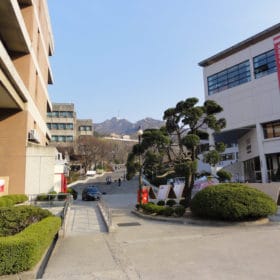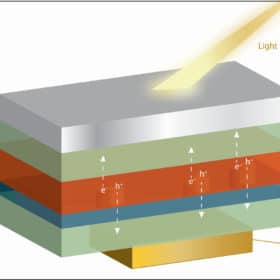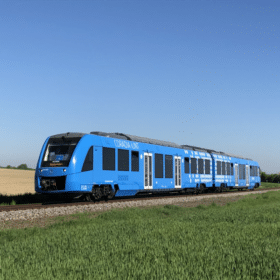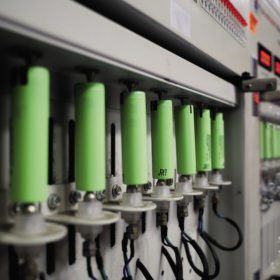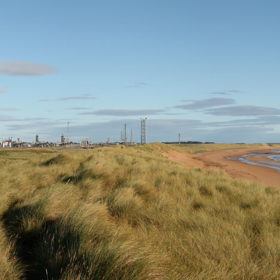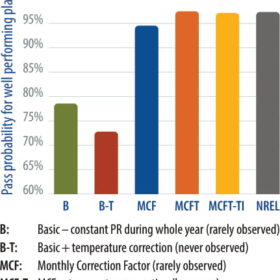Enabling aluminum in batteries
Scientists in South Korea and the UK demonstrated a new cathode material for an aluminum-ion battery, which achieved impressive results in both specific capacity and cycle life. The material allows researchers to better take advantage of aluminum’s energy storage characteristics, and produce batteries with much higher capacity.
China’s Covid recovery saw green bond issuance rebound in second half of 2020
The $18bn worth of sustainable finance instruments floated in the nation last year marked a retreat from previous highs but, with most of the bonds issued from July onwards, the recovery is under way, according to the IFC, which is anticipating a more-than-$100 billion sector in emerging markets over the next three years.
The Hydrogen Stream: Offshore hydrogen pipeline and more electrolysis capacity in Germany
Big German conglomerates such as Siemens, RWE and Vattenfall keep pushing for green hydrogen development through different projects. Germany’s first offshore hydrogen pipeline is being planned by RWE itself, Shell, Gascade and Gasunie, and should be commissioned in 2035. Siemens is planning hydrogen projects in the 5 MW to 50 MW range, for industrial and mobility applications.
Doping and capping promise perovskite stability
Scientists demonstrated two new approaches to improving the stability of perovskite solar cells. By both incorporating rubidium into the structure of the perovskite, and adding a film of two-dimensional perovskite as a capping layer, they were able to demonstrate a significant reduction in the cell’s sensitivity to moisture. The group says its research will open up new routes to improved performance and stability in perovskite PV.
The Hydrogen Stream: Alstom moves forward with world’s first hydrogen train, Chile seeks proposal for hydrogen projects
French train manufacturer Alstom said that its Coradia iLint train is now ready for commercial deployment and the Chilean government launched a call for green hydrogen projects. Furthermore, several developments for fuel cell electric vehicles were announced.
Average silver price expected to reach $27.3 per ounce this year
According to the Silver Institute, global industrial silver production is expected to grow 8% this year due to strong demand for consumer electronics and solar. The price for silver is expected to peak at $32 per ounce later this year and its average price to increase 33% over 2020.
Battery testing builds certainty
Owners and operators of energy storage systems, as well as investors, need transparent ways to evaluate battery performance. They need certainty that the selected batteries for their ESS projects will perform reliably, have predictable life expectancies, and meet projected revenue and contractual obligations over their lifetimes. The economic viability of entire projects depend on this confidence, writes Michael Kleinberg of DNV.
The Hydrogen Stream: 20 MW green hydrogen plant in Finland, two Australian projects move forward
Storegga, Shell and Harbour Energy want to set up a 20 MW blue hydrogen production facility in the U.K. Australia’s Origin Energy wants to build a hydrogen facility at the Port of Townsville, in Queensland. South African company Sasol and Toyota South Africa Motors have announced a partnership to “commence exploration of the development of a green hydrogen mobility ecosystem in South Africa,” starting with zero-emission hydrogen fuel cell (FC) heavy-duty, long-haul trucks.
We all trust the PV performance ratio test – but should we?
The performance ratio test is at the core of the handover from EPC to owner. Yet sometimes, even when best practice is applied – and without particularly demanding guaranteed values to be achieved – these tests fail good projects. This can lead to costly delays and wasted effort spent trying to find issues that might not exist. Everoze Partner Dario Brivio reviews the likelihood of this happening and considers ways to increase confidence in the precision of such tests, based on recent independent analysis of real-world projects.
Green hydrogen and the cable-pipeline dilemma
New research from Singapore has found that gas pipelines for the onshore transport of green hydrogen and the cables for the transport of electricity to produce it at a distant location have similar costs at a 4000 km transmission distance. For longer distances, gas pipelines were found to be cheaper than cables, although the electric lines are said to benefit from scaling up and higher utilization. For both options, however, a currently too high hydrogen LCOE remains the biggest barrier to overcome.
